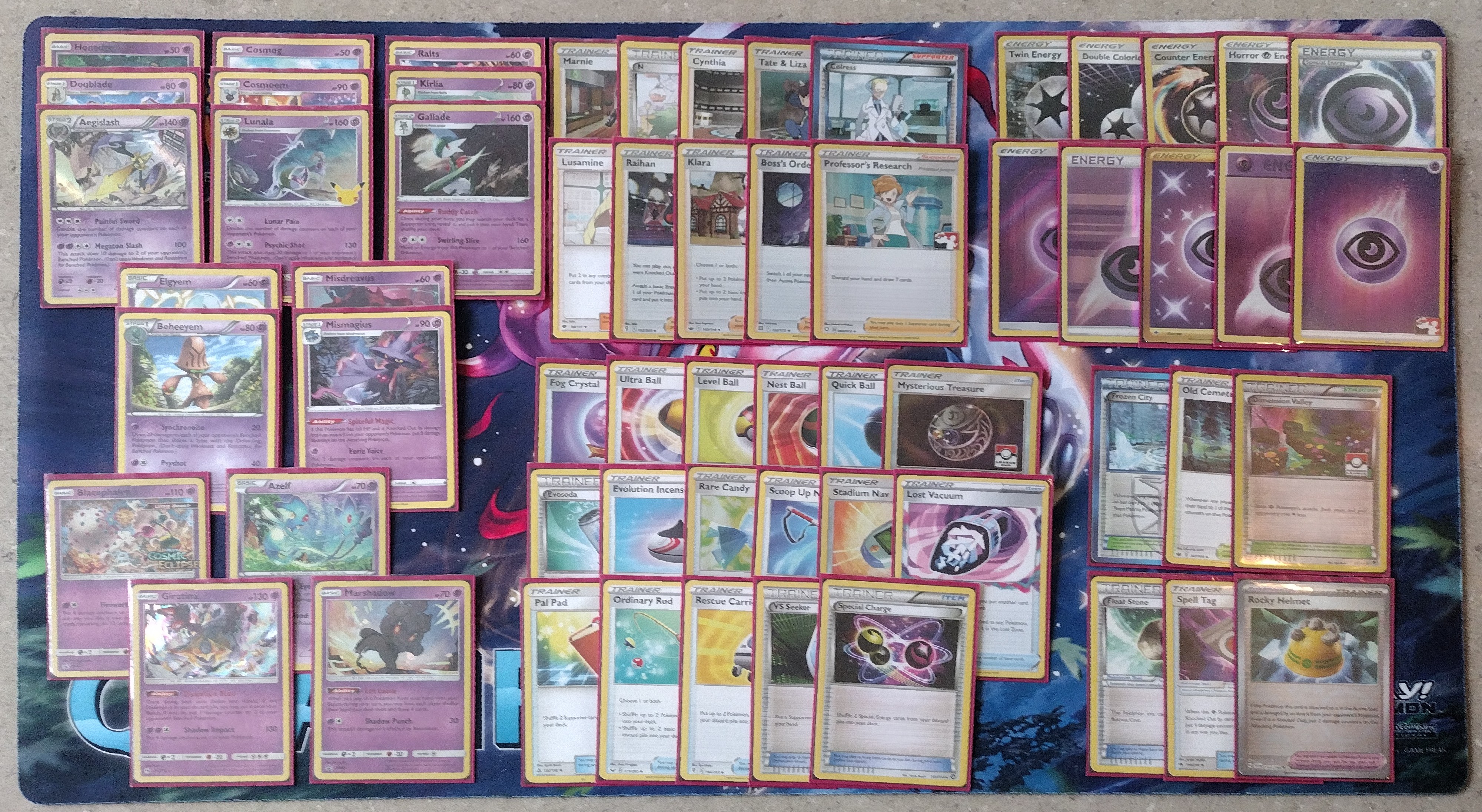GLC Psychic Spread Deck
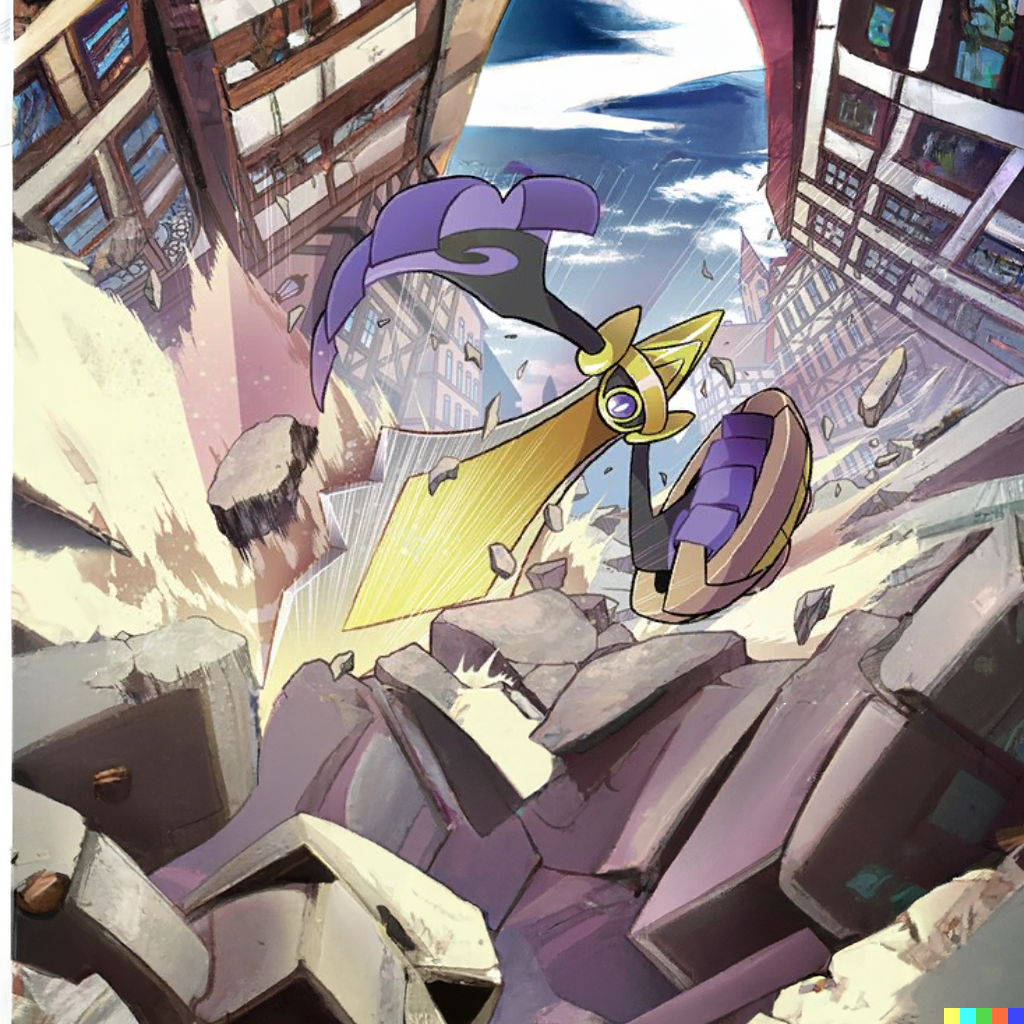
Lunar Pain
Strategy
The core aim of this deck is to chip away slowly at your opponent’s entire board at once, before finishing everything off all at once with Lunala or Aegislash’s attacks, doubling all the damage already built up – taking up to a full 6 prizes in one final turn! To this end, the key spread attackers are Beheeyem and Mismagius, with Azelf providing backup in a pinch, trading the utility of being a Basic Pokémon for the drawback of Shining Eyes only adding extra counters to pre-damaged Pokémon.
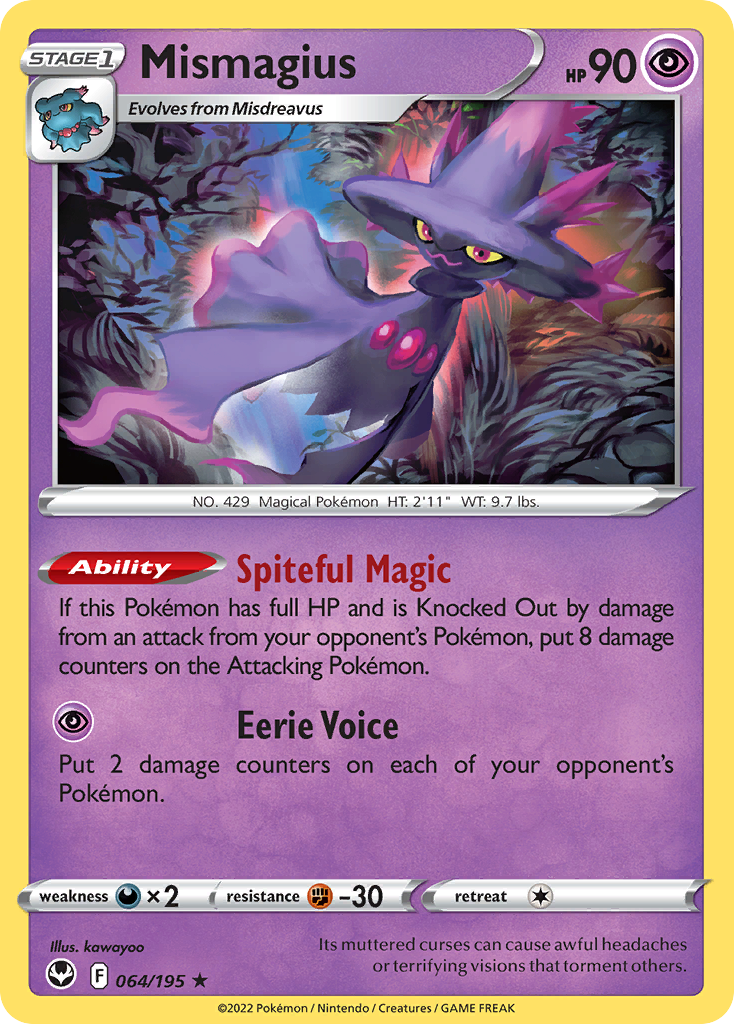
The choice of Trainer cards also accelerates the process of wearing down your opponent. Rocky Helmet, Spell Tag, and Horror {P} Energy combine well with Mismagius’ Spiteful Magic Ability to punish your opponent for attacking your Pokémon, and Old Cemetery and Frozen City will punish even opposing Psychic decks for attaching too many Energy cards from their hand.

To help set up quickly and start spreading damage early, the deck draws on Psychic’s extra “Ball Search” cards – Mysterious Treasure and Fog Crystal – to get Basic Pokémon into play reliably, or even find Evolution Pokémon or Basic Energy cards later on. Elgyem’s First Contact attack can also be really helpful, working as a “Call for Family”-type attack to search for up to two basic Pokémon and put them onto your Bench. Once set up, the “Engine” of the deck uses Kirlia’s Refinement ability to cycle through extra cards each turn, and the Gallade’s Buddy Catch to find the right Supporter for any occasion! One of the main enemies to any spread strategy is high HP totals – but that’s not a problem if your opponent can’t find their Evolution cards quickly enough. To keep your opponent scrambling to get set up for as long as possible, Marshadow’s Let Loose ability resets both players’ hands to only four cards each, shuffling your opponent’s options back into their deck. In the same theme, Marnie and N will both also work to disrupt your opponent’s hand, foiling any long-term plans they might have made. If your opponent’s hand is looking a bit too large at any point later in the game too, don’t worry: Scoop Up Net and Rescue Carrier make it easy to reuse Marshadow, wherever it may be, much to your opponent’s annoyance.
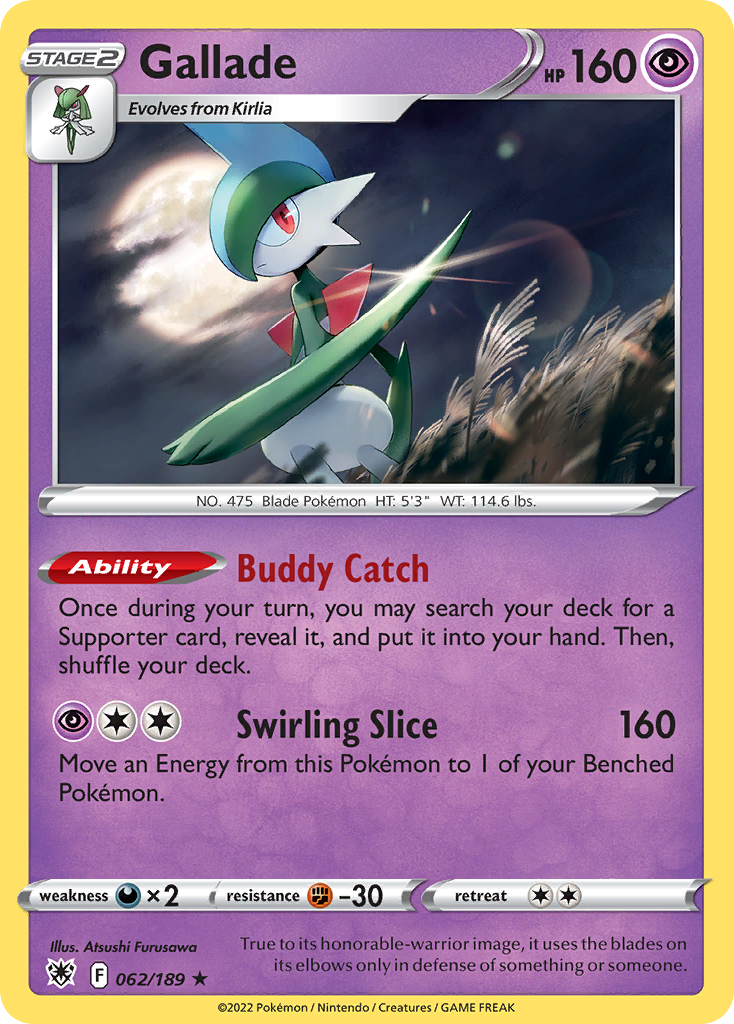
Though Gallade provides the “Engine” for the deck, that certainly doesn’t mean he’s incapable in the Active Spot. If your opponent’s Active Pokémon is looking more threatening than a spread attacker could handle, Swirling Slice deals a healthy 160 damage while setting up Gallade’s replacement for next turn. What’s more, by using Buddy Catch to find Raihan, this attack can retaliate against a KO out of absolutely nowhere, as long as there’s still a Twin or Double Colorless Energy in the deck.
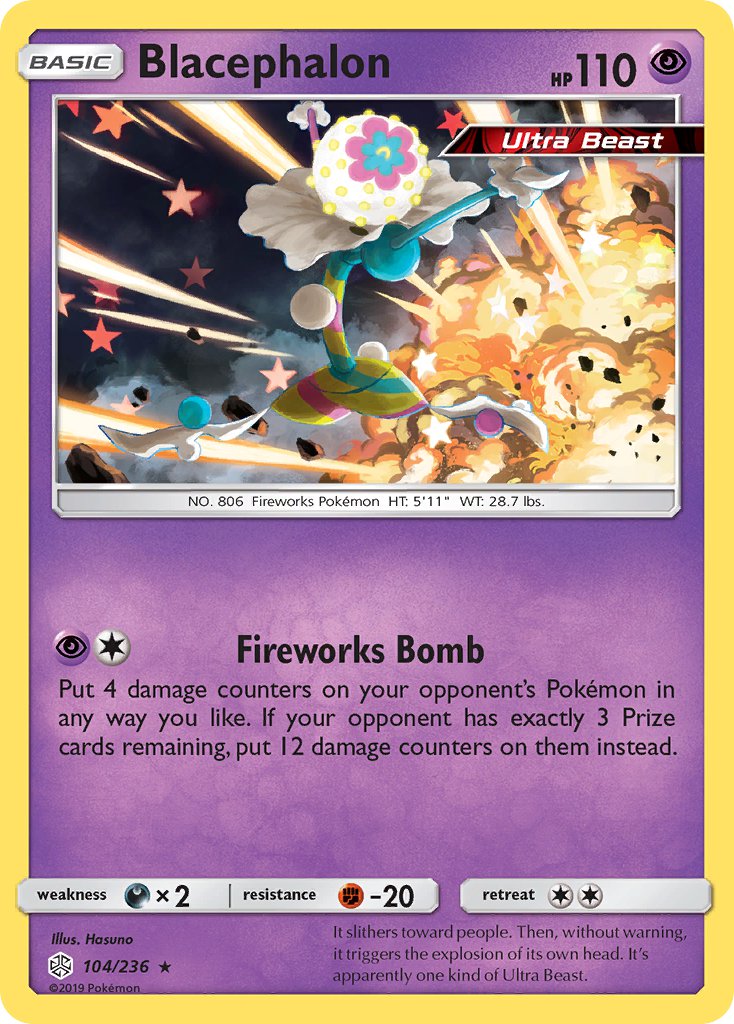
Blacephalon is a go-to inclusion in Psychic spread (or any Psychic deck for that matter), with Fireworks Bomb handing out 12 damage counters if your opponent has exactly 3 Prize cards remaining, perfect for setting up an inevitable final play. Giratina can also help here – while not commonly used as an attacker in this deck, the extra damage counters from its Distortion Door ability can set up the perfect numbers for a board wipe, or to allow a spread attacker to take down a lower-HP benched support Pokémon.
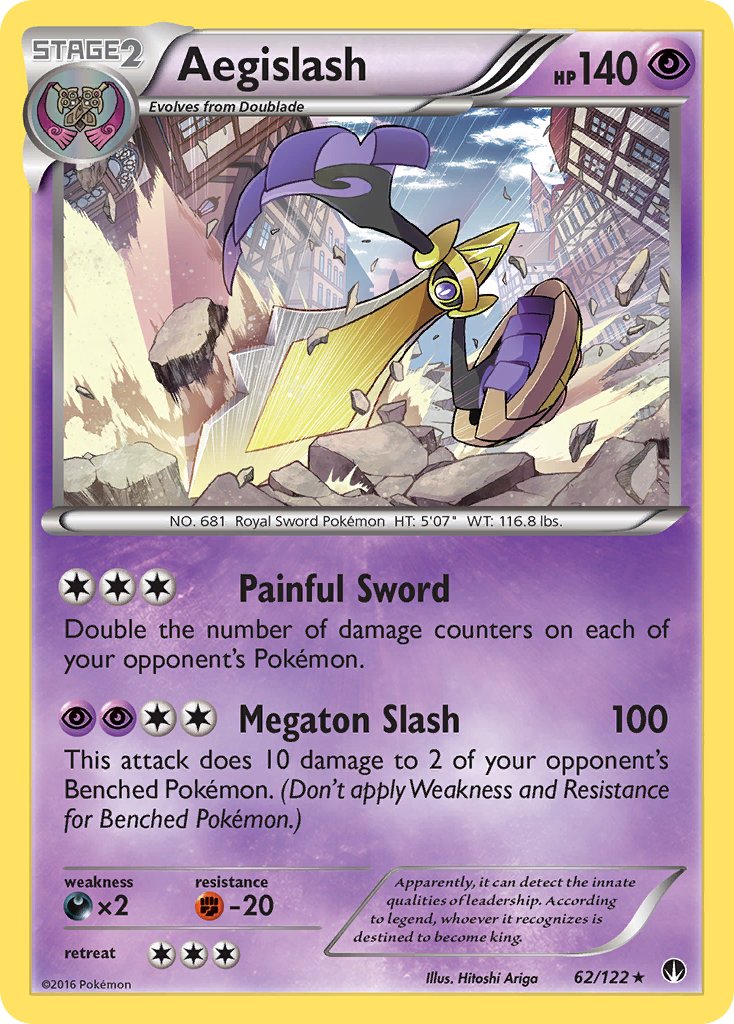
The grand finale to this deck is either Lunala’s Lunar Pain or Aegislash’s Painful Sword. Both attacks double the damage across your opponent’s entire board, getting full value out of your spread attackers, and often ending the game with just a single attack! Furthermore, since both attack costs are entirely Colorless energy, they synergise well with Twin and Double Colorless energies, along with the powerful Stadium card Dimension Valley.
What to Watch Out For
Since the deck likes to do its damage slowly, any healing cards can really set back your progress, especially healing that applies to your opponent’s entire board, like the Stadium cards Crystal Cave and Rough Seas. Sky Pillar can also be difficult, preventing attacks from having any impact on Benched Pokémon. To this end, the deck plays not only three Stadiums, but also Lusamine and Stadium Nav, to make it easier to always bump your opponent’s Stadium on the very next turn. Lost Vacuum is also not only good for permanently getting rid of healing Stadiums (which put your progress back 1.5 turns each time they get to activate), but also troublesome cards like Metal Goggles, which would block your damage counters from ever being placed.
“Bench Barrier” Pokémon are typically not an issue, since they can’t block the damage counters from Mismagius (Though they will block Beheeyem’s Damage), nor the counters from Trainer cards like Spell Tag, making them easy to remove, due to their typically low HP totals. In the case of stronger Bench Barriers, like Machoke’s Daunting Pose ability, things get harder, making it necessary to switch to a more direct attacking line, with Gallade, Giratina, or Lunala.
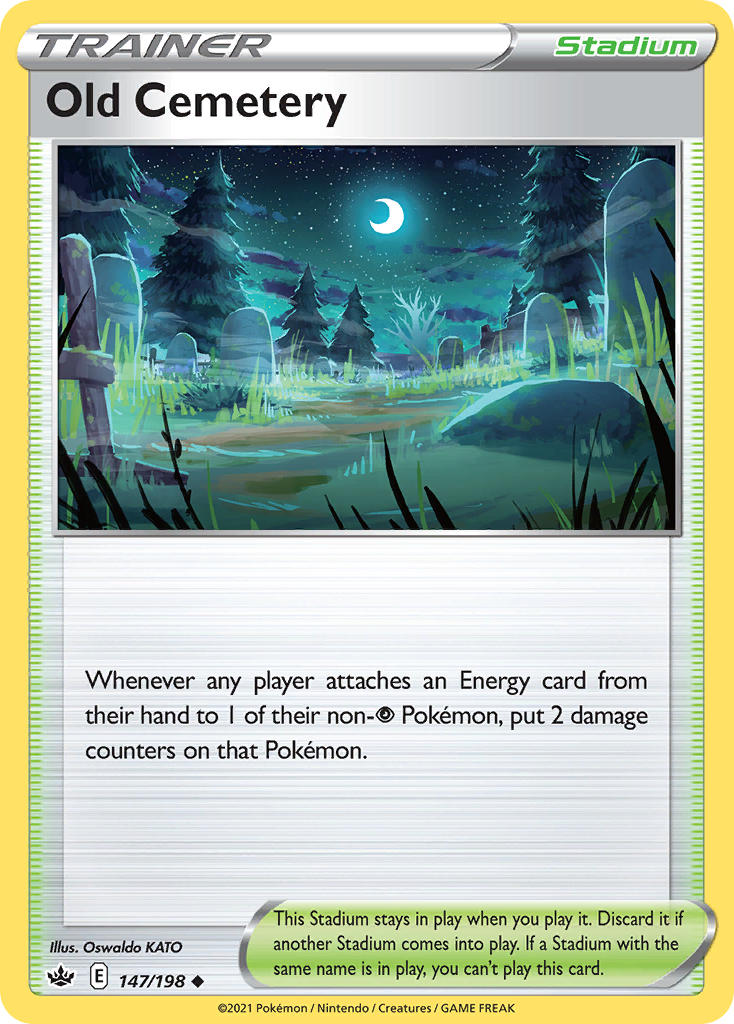
Darkness in general is a very difficult matchup, especially with Guzzlord’s -20 Resistance to Psychic meaning that no single attacker in the deck can manage to score a one-hit-KO on it. Taking extra prizes can also be pretty hard to deal with, since all the spread attackers have extremely low HP totals, so they can be easily knocked out. In general, this matchup is survived by taking advantage of the need to attach energy to Guzzlord manually (since you won’t be taking prizes early, Beast Ring won’t be active), combined with a Stadium like Old Cemetery to help even the damage-dealing playing field. Using Boss’s Orders to bring a Pokémon with high retreat to the Active Spot can also allow a few uninterrupted turns of spread damage, but watch out for Hiding {D} Energy!
Next, to deal with Pokémon that are immune to effects of attacks, such as Snorlax LOR 143, a more direct route is necessary – as before: Gallade, Giratina and Lunala are the best for this purpose, each able to do a respectable amount of damage themselves. Alternatively, you can do your best to ignore the problem. Even if they are immune to attack effects themselves, that still leaves the other Pokémon in play vulnerable. What’s more, there are plenty of ways to add damage counters without relying on attack effects – Abilities, Tools, Stadiums, and Energy will all still place their damage counters on these Pokémon, and these can quickly add up!
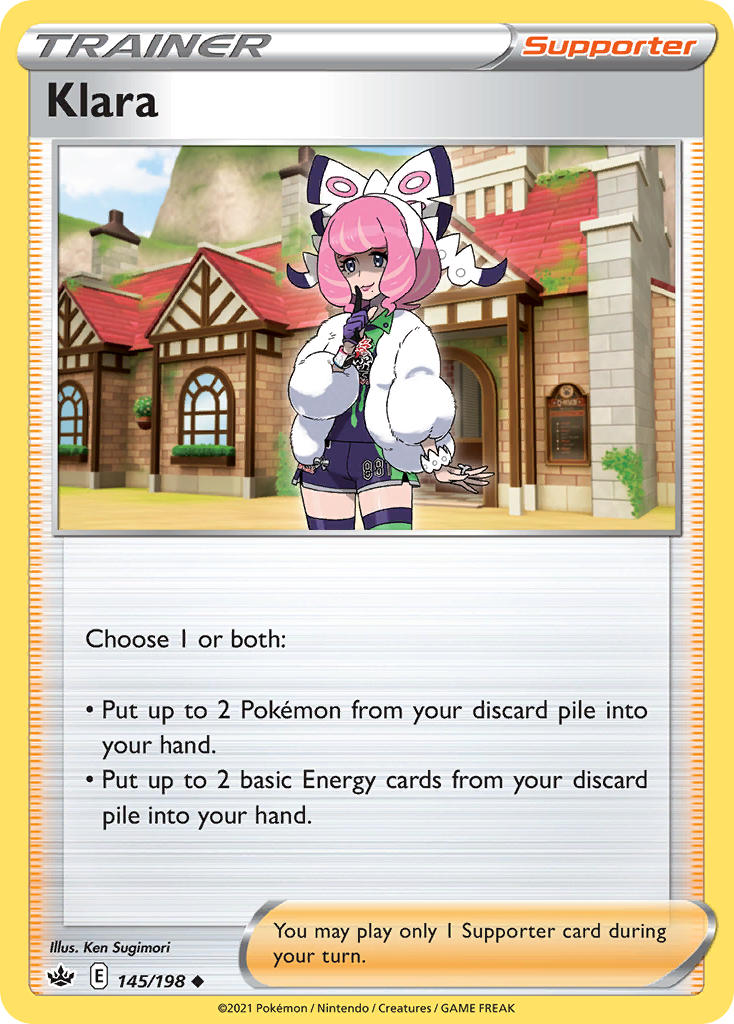
Finally, this deck can sometimes be its own worst enemy, and careful planning can be the key to coming out on top. This deck plays no ways to search its prize cards, relying on the extra redundancy between the Aegislash and Lunala lines, and the Mismagius and Beheeyem lines. Combined with the low energy count (since most attackers only need one, and Dimension Valley reduces the expensive attack costs), resource management is critical. Klara, Ordinary Rod, Rescue Carrier, and Special Charge will help you out of sticky situations, but make sure to always leave a Basic Energy in the discard pile if you can – Raihan can be extremely useful at the right time!
Closing Thoughts
Overall, this is definitely a deck I have had a lot of fun playing personally – falling behind on prizes early on, then coming back in one big play is definitely a fun experience to have when playing a deck. I also feel that this is one of the more competitive decks I have and it is always up for consideration when I’m picking which deck to bring to the weekly Cardboard Warriors tournaments, since I can rely on its consistency and variety of options against a wide range of decks.
There are plenty of powerful spread options in Psychic, however, so don’t feel limited to this exact list – feel free to play around with other options to tune the deck to your liking. The main ones I have considered are Gourgeist XY 57, to replace Beheeyem with another source of damage counters, rather than damage, while also giving access to Pumpkaboo EVS 076 with the Pumpkin Pit ability, to help with getting rid of those annoying Stadiums. Mimikyu LOR 080 and Chandelure LOT 103 both offer strong attacks in Worst Gift and Vortex of Pain, which scale in power the more damage counters are on all your opponent’s Pokémon, which could provide nice answers to bulky threats like Wailord, Torterra, or Snorlax. Finally, another commonly-played alternative to the final Lunar Pain/Painful Sword attack in this deck is Dusknoir BCR 63, which allows you to move damage counters around your opponent’s board as you please with the Sinister Hand ability, letting you take your final KOs easily, by moving all the counters you’ve built up onto weaker supporting Pokémon. Whatever Pokémon you choose to use, I hope you have fun trying out Psychic spread, and if you already do, I hope I’ve provided you with some new and interesting ideas. Thanks for reading and have fun playing Gym Leader Challenge!
Deck List
